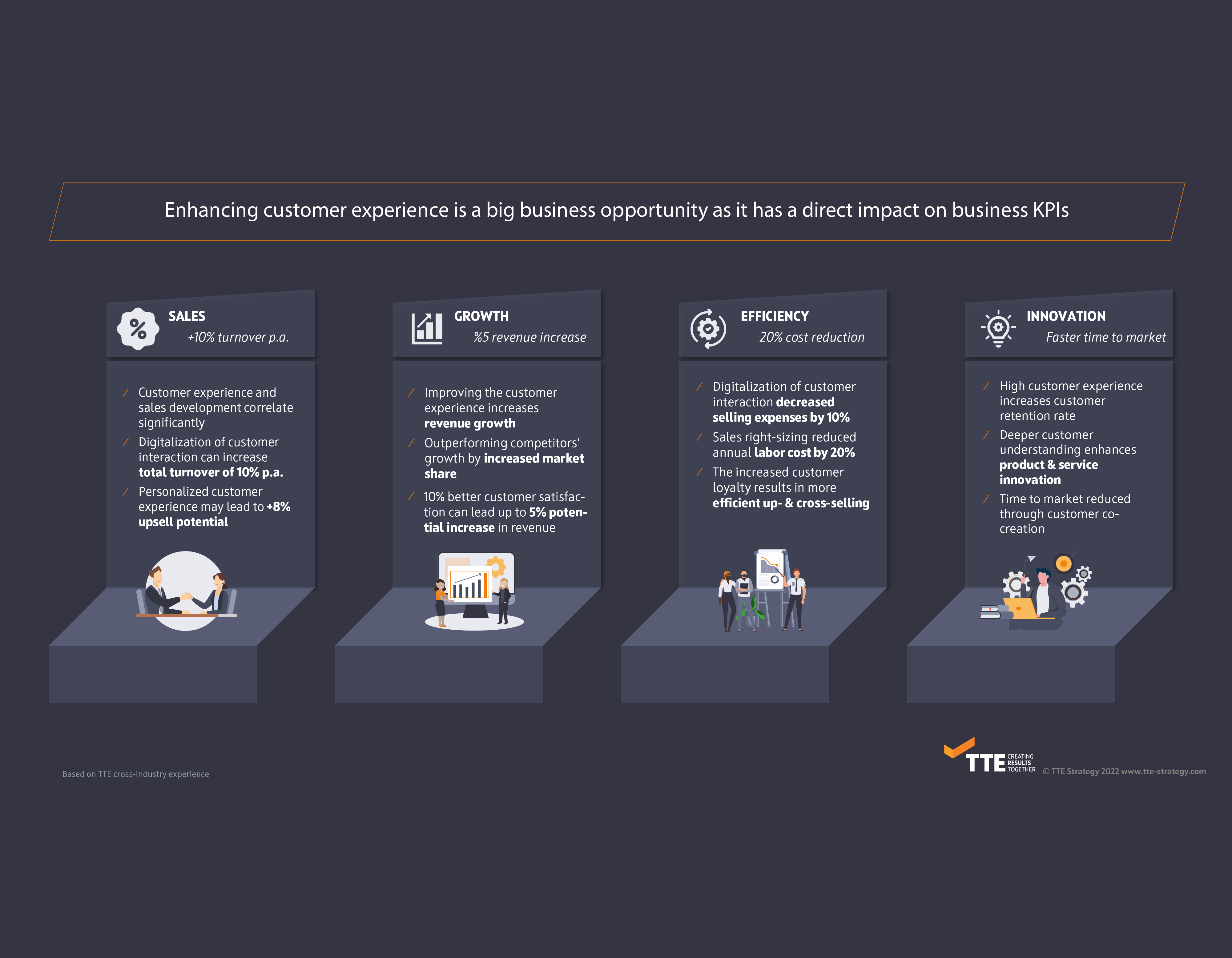
CX transformation: strengthening customer relations, promoting growth
Whether it’s the pandemic, inflation, or the energy crisis – today’s world is surrounded by uncertainty.
At the same time, competitive pressure is rising in the overwhelmingly saturated markets and companies are compelled to find innovative solutions for long-term business growth. Closeness to the customers is a key success factor here.
Generally speaking, however, in attempting to master these challenges, neither the price nor the product characteristics sufficiently serve as distinguishing features for the offering. Instead, there should be a greater focus on the customer experience (CX): Customer personas are becoming ever more complex as a result of the wide range of products and services on offer. An excellent CX requires companies to have a comprehensive understanding of their customers’ needs and guarantee a fast, seamless service. They can primarily achieve this by undergoing a holistic CX transformation that takes into account relevant key areas and creates a positive customer experience across all touchpoints and channels.
In the following article, we show you which factors you need to bear in mind to make your CX transformation a success.
Successfully mastering the CX transformation
If you are aiming to bring about a CX transformation at your company, it is based on two elements: internal optimization and customer orientation. On the one hand, this requires you to establish lean processes, increase the complexity of systems and data, and operate several commercial channels. On the other hand, your customers’ needs and the increasing demand for tailored products and services must also be taken into consideration.
Shifting the focus from the product to the customer
Product-centric companies focus primarily on internal business processes. They improve product features, increase efficiency, and generate maximum output while keeping costs low. Internal business processes and the customer journey play a key role when taking a customer-centric approach. Combining the different perspectives makes it possible to find new solutions that strike a harmonious balance between customer needs and internal efficiency.
Enhancing the CX has a direct impact on a company’s KPIs:

Understanding and meeting customer expectations
Most customers want a convenient solution in the form of an offering that best suits their needs and is available at a reasonable price. Customers value interaction with the supplier – when, where, and how it is easiest for them. In addition, success and growth play a key role from the customer’s perspective.
For these and other reasons, it is particularly important that you make it as easy as possible for your customers to communicate with your company. Establish an appreciative corporate culture that prioritizes customer success and create a direct connection between your goals and the enhanced CX.
Only once you understand all customer interactions with your company and identify needs and challenges throughout the entire customer journey can you enhance the CX on a lasting basis – whether in terms of physical or digital touchpoints.
Recommended courses of action for a successful CX transformation
Three key factors are needed to make the CX transformation a success and shift the focus toward the customer:
Get to know your customers and their needs and challenges as well as you can.
By doing so, you can determine where your company is currently at and how much potential exists to optimize the CX. In this regard, you should ideally conduct a so-called CX maturity assessment and analyze the status quo: How are the processes in your company? To what extent do you already take a customer-centric approach? In which areas can improvements to the CX be made and how should they be prioritized?
The transition from a product-centric to a customer-centric organization requires careful planning – because the CX should never be handled superficially, but rather included in the corporate strategy and supported at top management level.
Define clear CX ambitions and use direct feedback from customers and internal stakeholders. These ambitions serve as a guide for integrating and undertaking the CX transformation. We recommend creating a structured road map to accompany the implementation process. Involving the employees in every step of the process is an essential success factor.
Determine specific CX KPIs (e.g. CSAT or NPS) in order to gauge the success of the CX transformation. The information obtained can be used to derive drivers that help to achieve the CX goals and contribute to the success of the CX transformation. In our view, the creation of an easy-to-understand dashboard for continually gauging the success is essential for visualizing the lasting impact of the initiative.
Would you like further support in relation to your company’s CX transformation?
Here at TTE Strategy, as multi-award-winning specialists in strategy and transformation consulting, we will be happy to assist you.
From working out a tailored CX strategy to tracking processes, you can count on our many years of expertise.
Let’s work together to create unique customer experiences. Contact us today for an initial consultation with no obligation.
We don’t just enhance the CX – we transform it!


TTE Strategy